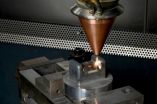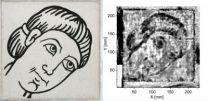(Press-News.org) The environment has a more formidable opponent than carbon dioxide. Another greenhouse gas, nitrous oxide, is 300 times more potent and also destroys the ozone layer each time it is released into the atmosphere through agricultural practices, sewage treatment and fossil fuel combustion.
Luckily, nature has a larger army than previously thought combating this greenhouse gas—according to a study by Frank Loeffler, University of Tennessee, Knoxville–Oak Ridge National Laboratory Governor's Chair for Microbiology, and his colleagues.
The findings are published in the Nov. 12 edition of the Proceedings of the National Academy of Sciences.
Scientists have long known about naturally occurring microorganisms called denitrifiers, which fight nitrous oxide by transforming it into harmless nitrogen gas. Loeffler and his team have now discovered that this ability also exists in many other groups of microorganisms, all of which consume nitrous oxide and potentially mitigate emissions.
The research team screened available microbial genomes encoding the enzyme systems that catalyze the reduction of the nitrous oxide to harmless nitrogen gas.
They discovered an unexpected broad distribution of this class of enzymes across different groups of microbes with the power to transform nitrous oxide to innocuous nitrogen gas. Within these groups, the enzymes were related yet evolutionarily distinct from those of the known denitrifiers. Microbes with this capability can be found in most, if not all, soils and sediments, indicating that a much larger microbial army contributes to nitrous oxide consumption.
"Before we did this study, there was an inconsistency in nitrous oxide emission predictions based on the known processes contributing to nitrous oxide consumption, suggesting the existence of an unaccounted nitrous oxide sink," said Loeffler. "The new findings potentially reconcile this discrepancy."
According to Loeffler, the discovery of this microbial diversity and its contributions to nitrous oxide consumption will allow the scientific community to advance its understanding of the ecological controls on global nitrous oxide emissions and to refine greenhouse gas cycle models.
"This will allow us to better describe and predict the consequences of human activities on ozone layer destruction and global warming," said Loeffler. "Our results imply that the analysis of the typical denitrifier populations provides an incomplete picture and is insufficient to account for or accurately predict the true nitrous oxide emissions."
### Loeffler collaborated with researchers from the University of Illinois in Urbana-Champaign; the Georgia Institute of Technology; the U.S. Department of Agriculture in Urbana, Ill.; the University of Puerto Rico; and the National Institute of Abiotic Stress Management in Pune, India.
University of Tennessee study: Unexpected microbes fighting harmful greenhouse gas
Nature has a larger army than previously thought combating nitrous oxide -- according to a study by Frank Loeffler, University of Tennessee, Knoxville -- Oak Ridge National Laboratory Governor's Chair for Microbiology, and his colleagues
2012-11-21
ELSE PRESS RELEASES FROM THIS DATE:
Saving water without hurting peach production
2012-11-21
U.S. Department of Agriculture (USDA) scientists are helping peach growers make the most of dwindling water supplies in California's San Joaquin Valley.
Agricultural Research Service (ARS) scientist James E. Ayars at the San Joaquin Valley Agricultural Sciences Center in Parlier, Calif., has found a way to reduce the amount of water given post-harvest to early-season peaches so that the reduction has a minimal effect on yield and fruit quality. ARS is USDA's principal intramural scientific research agency, and the research supports the USDA priority of promoting international ...
Better protection for forging dies
2012-11-21
Forging dies must withstand a lot. They must be hard so that their surface does not get too worn out and is able to last through great changes in temperature and handle the impactful blows of the forge. However, the harder a material is, the more brittle it becomes - and forging dies are less able to handle the stress from the impact. For this reason, the manufacturers had to find a compromise between hardness and strength. One of the possibilities is to surround a semi-hard, strong material with a hard layer. The problem is that the layer rests on the softer material and ...
CDC and NIH survey provides first report of state-level COPD prevalence
2012-11-21
The age-adjusted prevalence of chronic obstructive pulmonary disease (COPD) varies considerably within the United States, from less than 4 percent of the population in Washington and Minnesota to more than 9 percent in Alabama and Kentucky. These state-level rates are among the COPD data available for the first time as part of the newly released 2011 Behavioral Risk Factor Surveillance System (BRFSS) survey.
"COPD is a tremendous public health burden and a leading cause of death. It is a health condition that needs to be urgently addressed, particularly on a local level," ...
Detective work using terahertz radiation
2012-11-21
It was a special moment for Michael Panzner of the Fraunhofer Institute for Material and Beam Technology IWS in Dresden, Germany and his partners: in the Dresden Hygiene Museum the scientists were examining a wall picture by Gerhard Richter that had been believed lost long ago. Shortly before leaving the German Democratic Republic the artist had left it behind as a journeyman's project. Then, in the 1960s, it was unceremoniously painted over. However, instead of being interested in the picture, Panzer was far more interested in the new detector which was being used for ...
Architecture of rod sensory cilium disrupted by mutation
2012-11-21
HOUSTON – (Nov. 22, 2012) – Using a new technique called cryo-electron tomography, two research teams at Baylor College of Medicine (www.bcm.edu) have created a three-dimensional map that gives a better understanding of how the architecture of the rod sensory cilium (part of one type of photoreceptor in the eye) is changed by genetic mutation and how that affects its ability to transport proteins as part of the light-sensing process.
Almost all mammalian cells have cilia. Some are motile and some are not. They play a central role in cellular operations, and when they ...
New evidence of dinosaurs' role in the evolution of bird flight
2012-11-21
Academics at the Universities of Bristol, Yale and Calgary have shown that prehistoric birds had a much more primitive version of the wings we see today, with rigid layers of feathers acting as simple airfoils for gliding.
Close examination of the earliest theropod dinosaurs suggests that feathers were initially developed for insulation, arranged in multiple layers to preserve heat, before their shape evolved for display and camouflage.
As evolution changed the configuration of the feathers, their important role in the aerodynamics and mechanics of flight became more ...
New Informatics and Bioimaging Center combines resources, expertise from UMD, UMB
2012-11-21
ADELPHI, Md. – A new center that combines advanced computing resources at the University of Maryland, College Park (UMD) with clinical data and biomedical expertise at the University of Maryland, Baltimore (UMB) could soon revolutionize the efficiency and effectiveness of health care in the state of Maryland and beyond.
The Center for Health-related Informatics and Bioimaging (CHIB) announced today joins computer scientists, life scientists, engineers, physicists, biostatisticians and others at the College Park campus with imaging specialists, physicians, clinicians ...
Wormholes from centuries-old art prints reveal the history of the 'worms'
2012-11-21
By examining art printed from woodblocks spanning five centuries, Blair Hedges, a professor of biology at Penn State University, has identified the species responsible for making the ever-present wormholes in European printed art since the Renaissance. The hole-makers, two species of wood-boring beetles, are widely distributed today, but the "wormhole record," as Hedges calls it, reveals a different pattern in the past, where the two species met along a zone across central Europe like a battle line of two armies. The research, which is the first of its kind to use printed ...
Human obedience: The myth of blind conformity
2012-11-21
In the 1960s and 1970s, classic social psychological studies were conducted that provided evidence that even normal, decent people can engage in acts of extreme cruelty when instructed to do so by others. However, in an essay published November 20 in the open access journal PLOS Biology, Professors Alex Haslam and Stephen Reicher revisit these studies' conclusions and explain how awful acts involve not just obedience, but enthusiasm too—challenging the long-held belief that human beings are 'programmed' for conformity.
This belief can be traced back to two landmark empirical ...
Beneficial microbes are 'selected and nurtured' in the human gut
2012-11-21
Animals, including humans, actively select the gut microbes that are the best partners and nurture them with nutritious secretions, suggests a new study led by Oxford University, and published November 20 in the open-access journal PLOS Biology.
The Oxford team created an evolutionary computer model of interactions between gut microbes and the lining (the host epithelial cell layer) of the animal gut. The model shows that beneficial microbes that are slow-growing are rapidly lost, and need to be helped by host secretions, such as specific nutrients, that favour the beneficial ...
LAST 30 PRESS RELEASES:
Numbers in our sights affect how we perceive space
SIMJ announces global collaborative book project in commemoration of its 75th anniversary
Air pollution exposure and birth weight
Obstructive sleep apnea risk and mental health conditions among older adults
How talking slows eye movements behind the wheel
The Ceramic Society of Japan’s Oxoate Ceramics Research Association launches new international book project
Heart-brain connection: international study reveals the role of the vagus nerve in keeping the heart young
Researchers identify Rb1 as a predictive biomarker for a new therapeutic strategy in some breast cancers
Survey reveals ethical gaps slowing AI adoption in pediatric surgery
Stimulant ADHD medications work differently than thought
AI overestimates how smart people are, according to HSE economists
HSE researchers create genome-wide map of quadruplexes
Scientists boost cell "powerhouses" to burn more calories
Automatic label checking: The missing step in making reliable medical AI
Low daily alcohol intake linked to 50% heightened mouth cancer risk in India
American Meteorological Society announces Rick Spinrad as 2026 President-Elect
Biomass-based carbon capture spotlighted in newly released global climate webinar recording
Illuminating invisible nano pollutants: advanced bioimaging tracks the full journey of emerging nanoscale contaminants in living systems
How does age affect recovery from spinal cord injury?
Novel AI tool offers prognosis for patients with head and neck cancer
Fathers’ microplastic exposure tied to their children’s metabolic problems
Research validates laboratory model for studying high-grade serous ovarian cancer
SIR 2026 delivers transformative breakthroughs in minimally invasive medicine to improve patient care
Stem Cell Reports most downloaded papers of 2025 highlight the breadth and impact of stem cell research
Oxford-led study estimates NHS spends around 3% of its primary and secondary care budget on the health impacts of heat and cold in England
A researcher’s long quest leads to a smart composite breakthrough
Urban wild bees act as “microbial sensors” of city health.
New study finds where you live affects recovery after a hip fracture
Forecasting the impact of fully automated vehicle adoption on US road traffic injuries
Alcohol-related hospitalizations from 2016 to 2022
[Press-News.org] University of Tennessee study: Unexpected microbes fighting harmful greenhouse gasNature has a larger army than previously thought combating nitrous oxide -- according to a study by Frank Loeffler, University of Tennessee, Knoxville -- Oak Ridge National Laboratory Governor's Chair for Microbiology, and his colleagues


